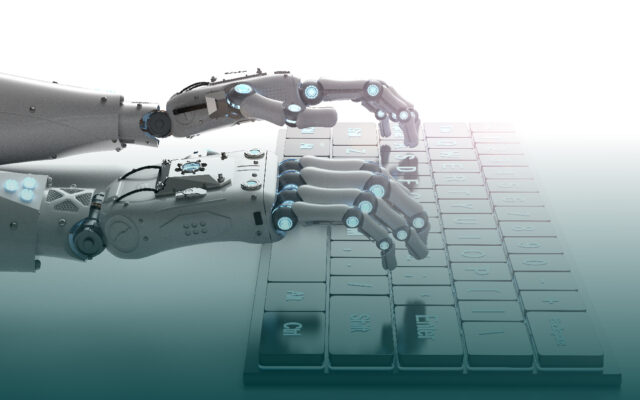Are you curious about machine learning technology and its application in various fields? This year is the right time to start a deep dive into the topic. Three years ago, the machine learning market value was $7.3 billion. By 2026, it’s expected to increase to $31.4 billion. If you are among the entrepreneurs who keep pace with the latest trends and use them to create more value, ML can be the technology your business has been lacking for so long.
To start with, machine learning is an innovative technology that grows as a subfield of computer science. Machine learning algorithms learn from data and use the learning results to help humans make informed decisions. ML technology has gained popularity in many industries, including logistics, fintech, healthcare, and others. This piece of writing explores the use of ML techniques and the pros & cons of ML application.
3 Major Methods of Machine Learning
In the machine learning context, the word “learning” denotes the ability of machines to analyze data and produce some results from this analysis. There are 3 traditional machine learning methods. They are general and can be applied to different techniques. Let’s check these methods in more detail.
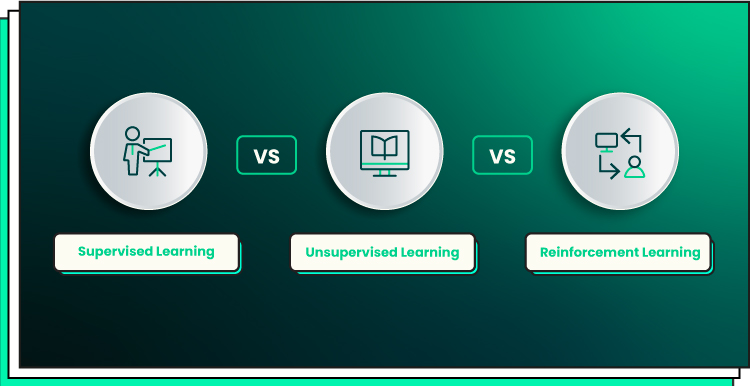
Supervised Learning
As its name indicates, this ML method is supervised by humans. Supervised learning is a type of learning where an ML model maps input data to the target variable. This method is often applied to classification and regression techniques. It’s also used in image recognition, stock price analytics, and sentiment analysis.
Under the supervised learning algorithm, the machine uses large volumes of output data to get the desired results by tuning the parameters one way or another. The ML predictions are tested until the pattern is validated. The outcomes are then used for the analysis of new data.
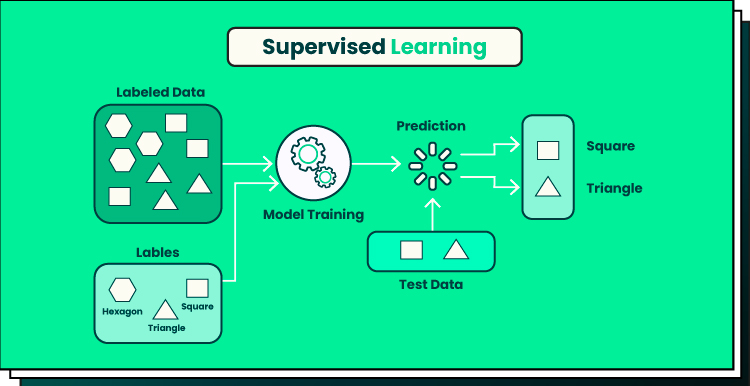
The strong side of supervised learning is that it is easy to use and accurate. But to start this learning process and train the ML model, you need to collect big volumes of labeled data first. This is a time- and effort-intensive process and can be very expensive. One more drawback of this machine learning method is that you take responsibility for the completeness of the data. If you use data that is biased or incomplete to train the model, the outcomes will also be incorrect.
Unsupervised learning
This machine-learning method is the opposite of supervised learning and requires no human involvement. Under unsupervised machine learning algorithms, you use unlabeled data to train the machine learning model. The ML algorithm learns from the data and identifies patterns, tendencies, or relationships. It does not map the input to the output layer — only the input data is needed to teach this model. Unsupervised learning is applied to clustering algorithms, anomaly detection, association detection, and other ML techniques that we will explore below.
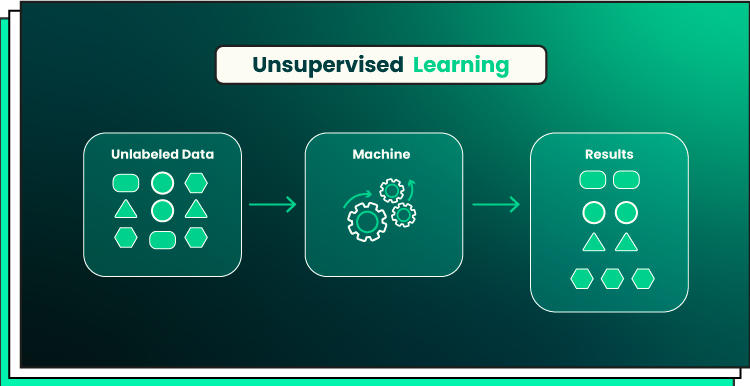
One of the benefits of unsupervised pattern recognition techniques is that they do not require big volumes of training data. This speeds up and eases the ML implementation process. The drawback of unsupervised learning techniques is that it may be difficult for data scientists to evaluate the accuracy of the results. What’s more, the absence of human involvement makes it harder for humans to interpret the results and turn them into actionable data.
Reinforcement learning
This machine-learning approach is frequently used in gaming, autonomous system development, and robotics. Reinforcement learning denotes learning from experience and tests by interacting with the context. The outcomes gained as a result of reinforcement learning are incorporated into further learning processes to ensure that the same errors are prevented or the same results are obtained.
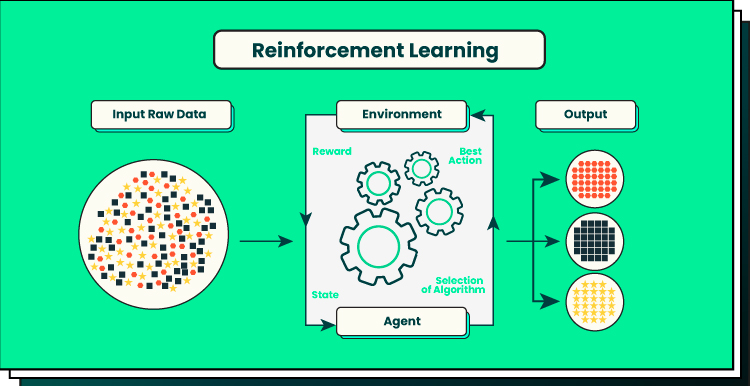
The dynamic growth of reinforcement learning can be explained by the benefits that this approach offers. One of the advantages is learning from errors or trials, which helps improve the models and make them more accurate. Reinforcement learning is an adaptive model that can be applied to complex tasks and changing conditions.
A challenging part of reinforcement learning application is that it is time-consuming and requires a lot of computational resources. This is a more sophisticated learning method compared to the first two. As a result, you will need a lot of training data to enable such a model. To learn from experience, the machine learning algorithm must gain this experience first.
6 Machine Learning Techniques to Choose From
Now, let’s talk about the main machine-learning techniques. While a machine learning method is a broader term covering the approach to ML learning, a technique is a narrower term denoting the procedure applied to get the job done. Keep reading to learn more about ML techniques or watch this video to get the explanation in 5 minutes.
The main machine learning techniques include regression, classification, clustering, decision tree, neural networks, and anomaly detection.
1. Regression
The first machine learning technique uses input data to predict numerical value. Data from the previous trials are used to make predictions on the numerical result of the upcoming trial. Linear regression is applied in fintech, engineering, and finance. It’s also used to forecast the weather, predict property prices, and decrease customer churn rates. Besides, the study by CIO Review demonstrates how the linear regression model estimates customer churn rates. If you own a growing retail business and want to boost your e-commerce metrics, ML implementation can do a great job for you.
Among the pros of this machine learning technique, we can mention the capacity to predict complex connections and relationships between input and output data. The insights gained as a result of regression can be used to model and modify the relationships between variables. Under the regression technique, data scientists can determine the importance of each variable and their role in predicting the output data. The technique has its cons as well. The main one is that the model is sensitive to outliers.
Here are the main types of regression techniques. Among those, logistic regression is one of the most common types.

2. Classification
Another machine-learning approach that we will explore today is classification. This is one of the machine learning techniques that categorizes the input data. Each input variable gets a label marking a category. In other words, the classification technique is used to map the input data to one of the categorial output labels. This type of machine learning technique is often used in fraud detection and marketing, disease diagnosis, and other areas.
The pros of the classification algorithms include the opportunity to use them for predicting the relationships between input and output. The insights from this model can be used to determine how each variable affects the prediction of the output label. The model enables data scientists to ask bipolar questions and use ML to get precise answers. As for its weak sides, the classification model sometimes cannot answer clearly what variable plays the most important role in the prediction process. Furthermore, class imbalance may affect the results of implementing classification overfitting or underfitting the raw data.
Contact us if you need help with ML technique implementation. Investing in machine learning will help you stay ahead of your competitors, automate analytics, and offer an engaging experience to clients.
3. Clustering
This is a machine-learning technique that involves grouping similar data pieces into clusters or groups based on the analysis of their characteristics and traits. Clustering helps machine learning engineers detect patterns and structures when working with unlabeled data. This machine-learning method is used in biology, image processing, marketing, and other spheres. eCommerce developers apply this approach to client segmentation based on their interests and behavior. We can also apply clustering methods when we launch feature extraction or compress data.
An important benefit of clustering is that it helps detect hidden patterns or data structures. This, in turn, leads software engineers to new discoveries and inventions. The drawbacks of this technique include the challenge of choosing the right clustering algorithm. Also, it may be hard for ML experts to decide on the number of clusters to use in each case. One more disadvantage of this machine learning technique is that it requires a lot of computational resources and can be affected by the initialization of centroids.
Here are some of the subtypes of clustering:
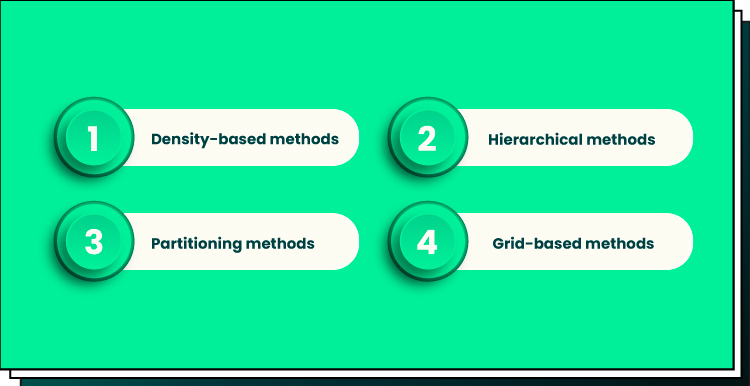
4. Decision Tree
A decision tree is one of the techniques of machine learning that solves classification dilemmas and involves using certain conditions or rules for the decision-making process. Under this approach, the input data is divided into 2 or more homogeneous data sets based on the defining attributes. Like other types of machine learning techniques, a decision tree is used in fintech (loan approval, credit scoring), marketing, and healthcare (data-based diagnosis prediction).
Decision trees are easy to use and interpret, which makes this model popular among ML experts. They can work with both numerical and categorical data. As for its drawbacks, the tree-like structure of decision trees makes this model very sensitive even to minor data changes.
5. Neural Networks
The given machine learning technique involves deep learning that resembles the way the human brain learns. Neural networks consist of multiple nodes that are connected. The interconnected nodes or neurons compose layers and are capable of predicting, analyzing data, and learning from it. The study by Google reports that neural networks are commonly applied to speech recognition, natural language processing (NLP), computer vision, etc.
Among the pros of neural networks, we may mention their ability to detect and identify complex data patterns. This makes this machine-learning model highly accurate. Neural networks can work with different data types, such as numerical and categorical data. However, this ML technique is prone to overfitting in case the input data is incorrectly regularized.
6. Anomaly Detection
As its name indicates, the anomaly detection technique is used for detecting an abnormal or unusual data point in the input dataset. What does abnormal or unusual mean? These are the data points that differ from the rest in some significant aspects. This technique is often applied in fraud detection, cybersecurity (detecting unusual traffic), healthcare (detecting unusual patterns in patient data), and finance.
The application of anomaly detection brings numerous benefits to a business. It helps detect fraudulent activity, prevent cybercrime, and identify errors before they have an impact on the whole system. The weak side of this machine learning approach is that it’s sometimes hard to define what an anomaly is.
There are 3 categories of anomaly detection:
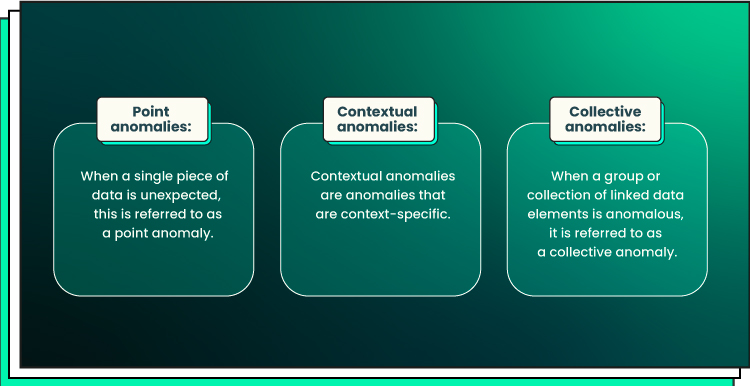
5 Famous Companies Implementing ML Techniques
This is the list of 5 companies everyone heard about. These companies quickly realized the need to incorporate ML models into their business operations. Some of them also use computational methods for their R&D activities.
Amazon
The company implements machine learning methods to offer personalized client recommendations and facilitate the customer experience. ML models process tons of client data to suggest relevant product recommendations to the clients. This increases the possibility that a customer will make a purchase, which leads to higher sales and a higher client satisfaction rate. What’s more, Amazon uses ML for supply chain management and cost optimization.
Netflix
Like Amazon, Netflix uses machine learning capabilities to analyze the user history on the platform and offer the movies or shows they will likely watch. This increases the time a user spends on the Netflix platform and makes it a vital part of the user’s leisure activities.
Google uses techniques of machine learning to improve its voice recognition technology and search engine. ML studies tons of search queries to learn from experience and provide as accurate search results as possible. As for voice recognition, Google implements ML techniques to teach the machine to correctly transcribe speech into text.
Tesla
Different methods of machine learning are applied to developing technology for self-driving vehicles. Data from cameras and sensors collected by a Tesla car is used by a machine learning model as the input data. Thanks to these data, auto-pilot gets smarter and can accurately detect obstacles on the road, ensure passengers’ safety, and adjust to different driving conditions.
IBM
A popular example of the ML application is IBM’s use of machine learning in healthcare. The company implements machine learning models to predict and prevent disease diagnosis, detect fraud, and improve customer service.
In Conclusion
In this article, we talked about 3 methods of machine learning and 6 machine learning techniques. Innovative techniques of machine learning described above are revolutionizing the way humans use historical data. ML models give plenty of opportunities to benefit from collecting labeled and unlabeled data and applying it to different contexts. Though, the main areas where ML is applied include healthcare, fintech, cybersecurity, and ecommerce.
Contact us if you are looking for ways to implement machine learning in your business or wondering which ML technique will work best in your case. Whether you aim to use ML to cut operation costs or get more revenue, we can help you build an effective ML strategy. Forbytes team of machine learning specialists and software engineers will combine business acumen and tech skills to help you get the maximum out of this transformational technology.

Our Engineers
Can Help
Are you ready to discover all benefits of running a business in the digital era?

Our Engineers
Can Help
Are you ready to discover all benefits of running a business in the digital era?








